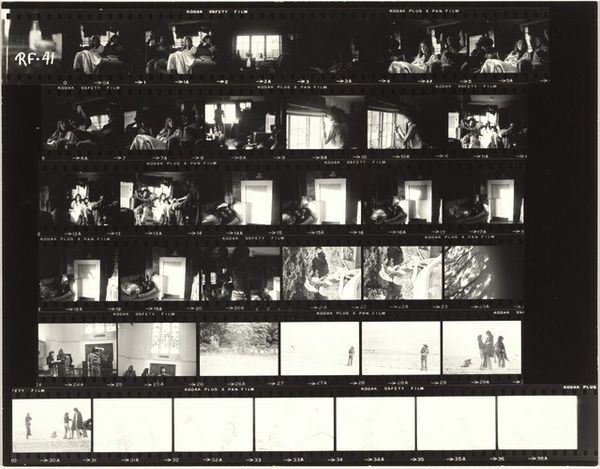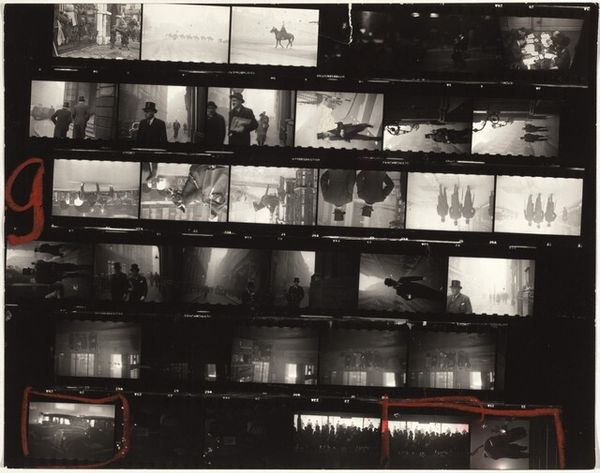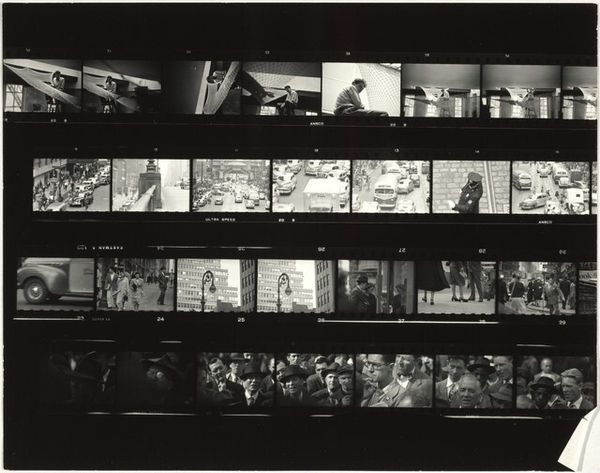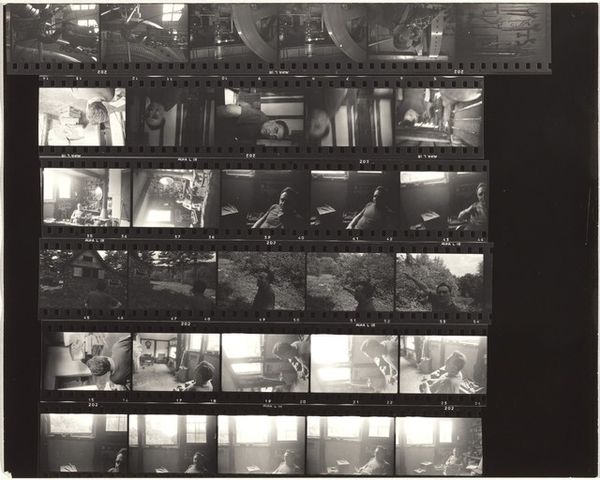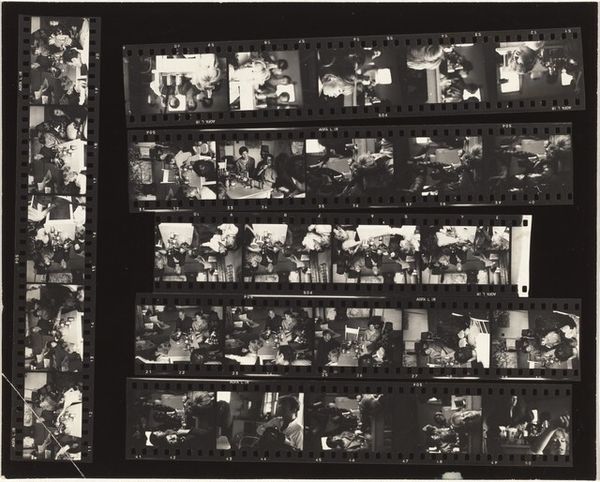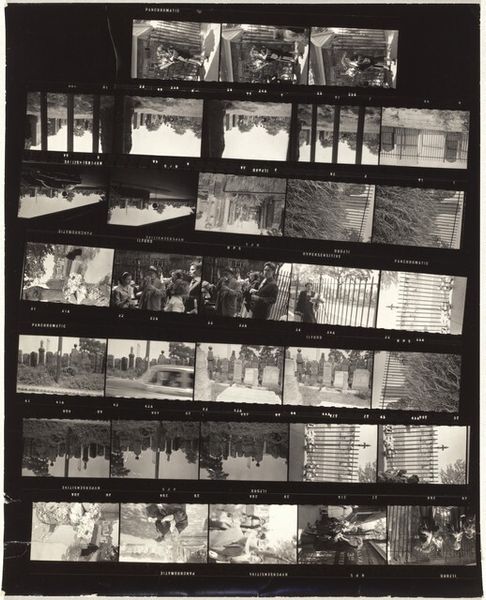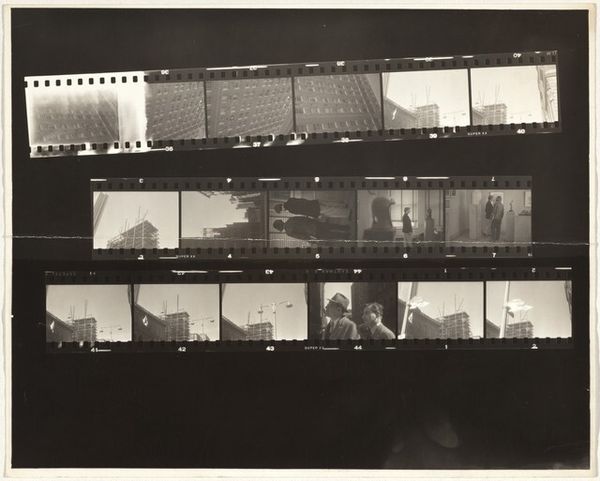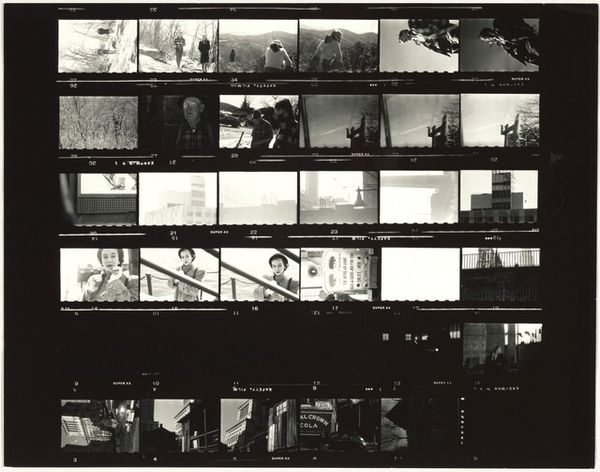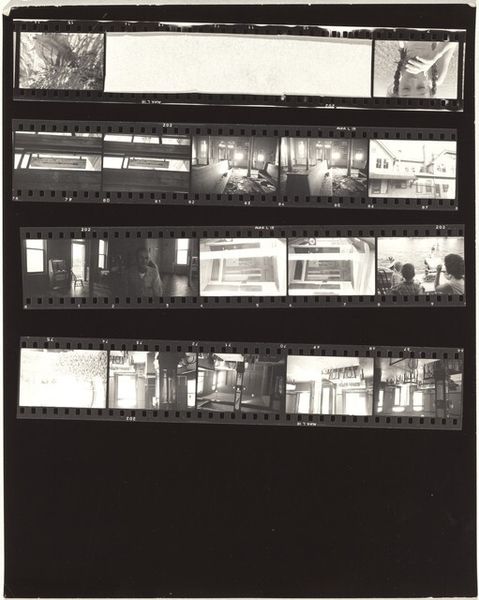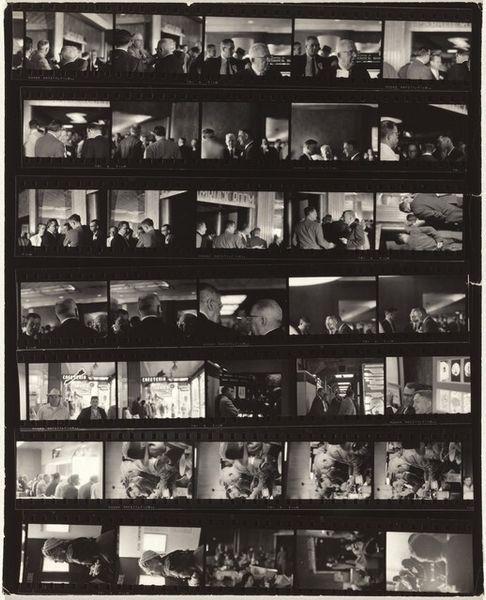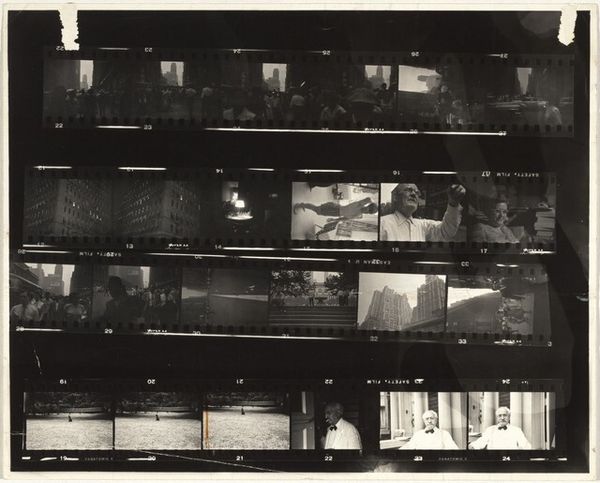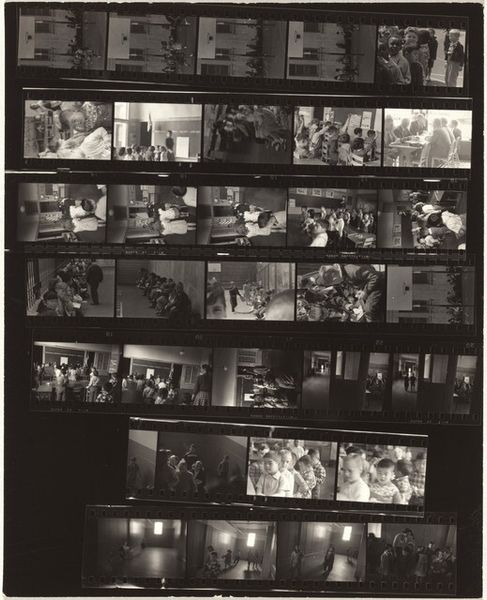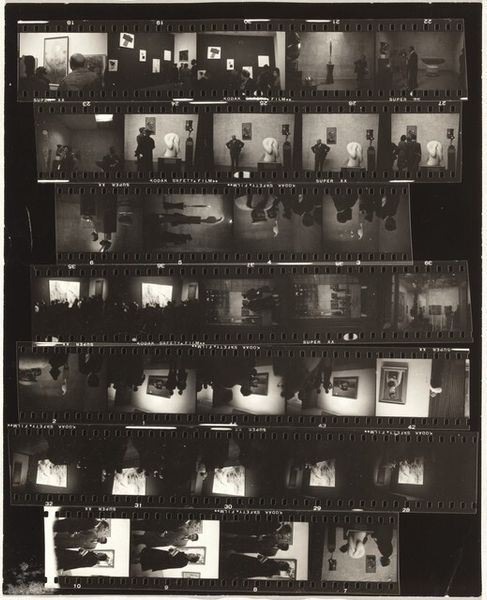
photography
#
portrait
#
film photography
#
street-photography
#
dark monochromatic
#
photography
#
monochrome photography
#
modernism
#
monochrome
Dimensions: sheet: 21.7 x 27.8 cm (8 9/16 x 10 15/16 in.)
Copyright: National Gallery of Art: CC0 1.0
Curator: Robert Frank’s "London and Paris RF 44," created in 1973, presents us with a contact sheet of photographs, primarily monochrome, seemingly documenting intimate moments in London and Paris. What strikes you first about it? Editor: The grittiness, definitely. The high contrast and grainy texture evoke a sense of raw, immediate reality. It feels almost like a document recovered from another time, showcasing life's imperfections. Curator: Frank’s work, especially after "The Americans," often embraced this more subjective and deliberately rough aesthetic. The contact sheet format itself becomes part of the statement. This way of showing his working process challenged the conventional clean presentation that galleries of the time were favoring, right? Editor: Absolutely. By revealing the process—the selection, the editing, the materiality of the photographic practice itself—Frank dismantles the idea of the photograph as a purely objective representation. This brings labor to the foreground, exposing photography not as neutral capture, but as material labor. What specific labor can be seen in this example? Curator: The street-level view into the lives of ordinary folks is quite a democratic lens that also carries into how he displays his own work; it certainly shifted expectations, particularly within museum and gallery contexts of the early seventies, often still steeped in more formal conventions. Editor: How this raw vision enters into collections is of great importance here too. Seeing those perforations of the sheet also reminds the viewer this piece has been man-made. Was Frank seeking to reflect more of this quality as photography turned from something niche to a regular part of popular culture? Curator: Undeniably. He played a crucial role in transforming documentary photography. Frank sought authenticity and often revealed the socio-political forces present, steering away from the overly polished work favored by institutions at the time, seeking the more ‘human’ aspects. Editor: Indeed. Through Frank’s deliberate aesthetic and the conscious reveal of the photographic medium itself as process, “London and Paris RF 44” underscores how all creation bears the marks of the materials from which it's made, and, more broadly, the work in getting there. Curator: Exactly, and that’s part of what makes this piece a critical reflection on art, culture, and society.
Comments
No comments
Be the first to comment and join the conversation on the ultimate creative platform.
